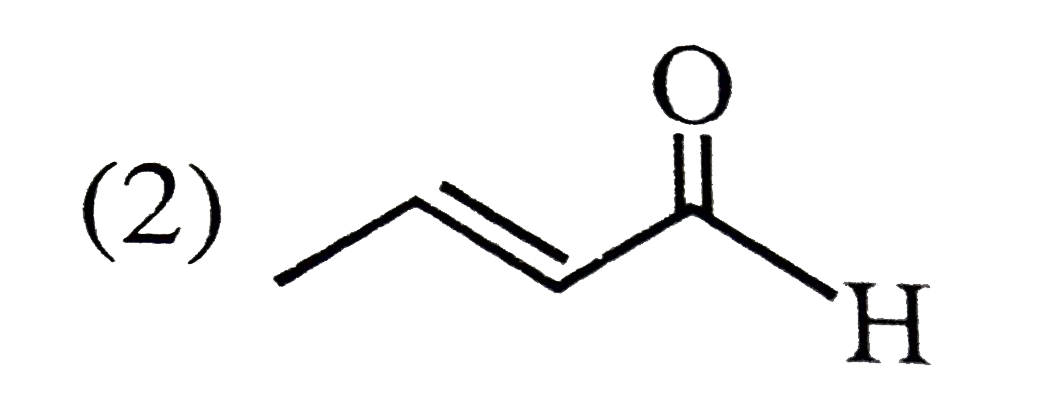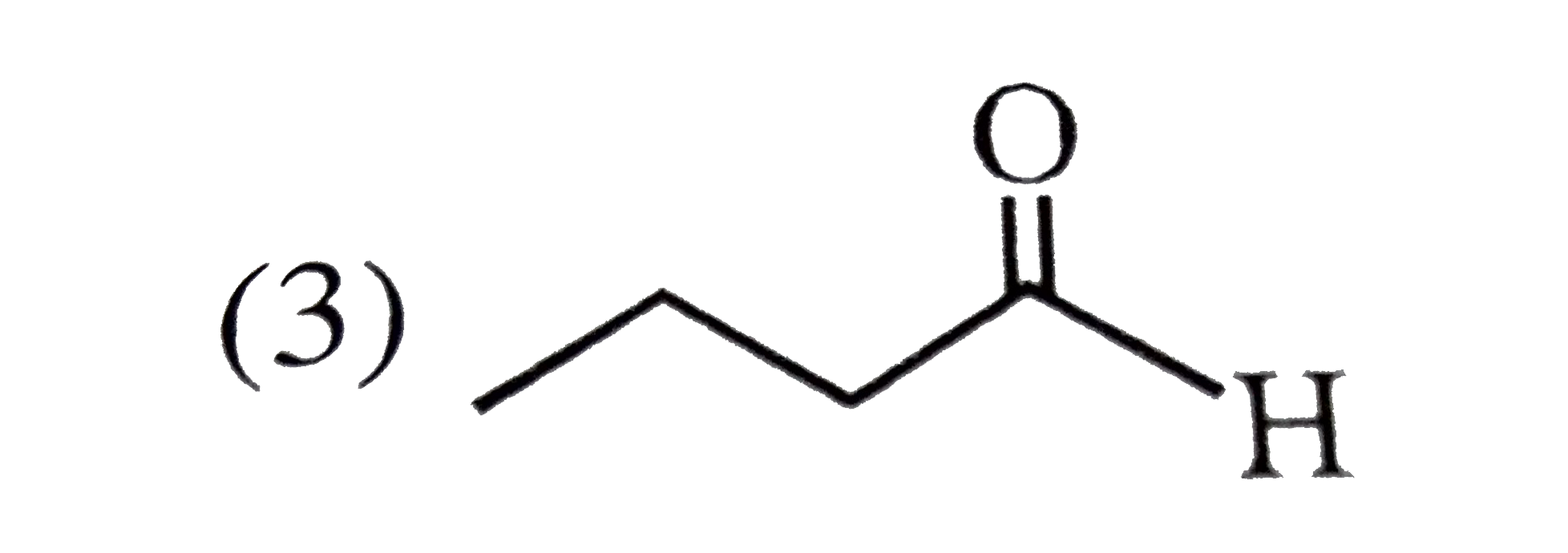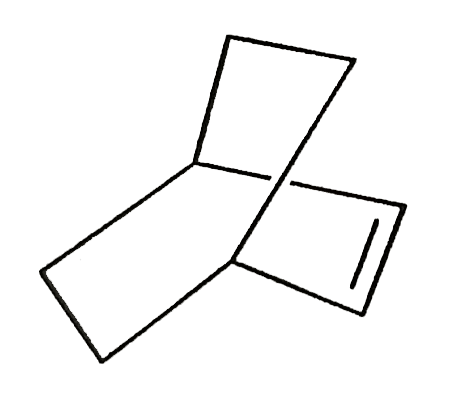But-2-ene 1.O3−−−−−−−→2.Zn,H2OPOHӨ−−−−−→ΔQPd/C−−−−−→H2R
R is :




The correct Answer is:C
To solve the problem step-by-step, let's break down the reactions involved in the transformation of but-2-ene to product R.
Step 1: Identify the starting compound
The starting compound is but-2-ene, which has the following structure:
CH3∣CH3−C=C−CH3
Step 2: Ozonolysis Reaction
The first step involves ozonolysis, where but-2-ene reacts with ozone (O3) followed by zinc (Zn) and water (H2O). This reaction cleaves the double bond and forms carbonyl compounds.
- The ozonolysis of but-2-ene results in two molecules of acetaldehyde (CH3CHO):
CH3∣CH3−C=C−CH3+O3→CH3CHO+CH3CHO
Step 3: Aldol Condensation
Next, the product from the ozonolysis (acetaldehyde) undergoes aldol condensation in the presence of a base (OH⁻) and heat. In this reaction, two molecules of acetaldehyde react to form a β-hydroxy aldehyde.
- The aldol condensation of acetaldehyde leads to the formation of 3-hydroxybutanal:
CH3CHO+CH3CHO+OH⁻→CH3−CH(OH)−CH2−CHO
Step 4: Dehydration
The β-hydroxy aldehyde (3-hydroxybutanal) can undergo dehydration (loss of water) to form an α,β-unsaturated aldehyde (crotonaldehyde):
CH3−CH(OH)−CH2−CHO→CH3−CH=CH−CHO+H2O
Step 5: Hydrogenation
Finally, the α,β-unsaturated aldehyde (crotonaldehyde) is subjected to hydrogenation in the presence of palladium on carbon (Pd/C) and hydrogen gas (H2). This reaction reduces the double bond and converts the aldehyde group to an alcohol.
- The hydrogenation of crotonaldehyde results in butanal:
CH3−CH=CH−CHO+H2→CH3−CH2−CH2−CHO
Conclusion
The final product R is butanal (CH3-CH2-CH2-CHO).
Final Answer
R is butanal.
---
The starting compound is but-2-ene, which has the following structure:
The first step involves ozonolysis, where but-2-ene reacts with ozone (O3) followed by zinc (Zn) and water (H2O). This reaction cleaves the double bond and forms carbonyl compounds.
Next, the product from the ozonolysis (acetaldehyde) undergoes aldol condensation in the presence of a base (OH⁻) and heat. In this reaction, two molecules of acetaldehyde react to form a β-hydroxy aldehyde.
The β-hydroxy aldehyde (3-hydroxybutanal) can undergo dehydration (loss of water) to form an α,β-unsaturated aldehyde (crotonaldehyde):
Finally, the α,β-unsaturated aldehyde (crotonaldehyde) is subjected to hydrogenation in the presence of palladium on carbon (Pd/C) and hydrogen gas (H2). This reaction reduces the double bond and converts the aldehyde group to an alcohol.
The final product R is butanal (CH3-CH2-CH2-CHO).
R is butanal.
Topper's Solved these Questions
Similar Questions
Knowledge Check
- Question 1 - Select One
Consider the following sequence of reactions:
Ketone A1.C2H5MgBr−−−−−−−−−−→2.H2OBH2SO4.Heat−−−−−−−−−→−H2OC1.O3−−−−−−−→2.Zn.H2O

The Ketone (A) is:A B
B C
C D
D
- Question 2 - Select One or More
In the given reaction:
Ph−C∣∣O−CH3H2N−OH−−−−−−−−→H⊕(X)PCl5−−−−−→Δ(Y) Y will beAPh−C∣∣O−NH−CH3BH3C−O∣∣C−NH−PhCPh−CH2−O∣∣C−NH2DPh−CH2−CN - Question 3 - Select One
Ph−O∣∣C−OHSOCl2−−−→(A)H2−−−−−−→Pd−BaSO4(B)
Product (B) is :APh−O∣∣C−HBPh−CH2−OHCPh−CH2−ClDPh−CH=CH2
RCH=CH2(1)O3−−−−−−−−−−−−→(2)H2O\(Zn)(A)H2O−−−−−−→LiAIH4(B)
Product (B) isView SolutionA1.O3−−−−−−→2.Zn,H2O(CH3)2CO+HCHO+CHO∣∣∣CHO Thus A is :
View Solutionname the following reactions(i). R−CH∣OH−CH2COOHNaHCO3−−−−−→ΔR−CH∣OH−CH2−H
(ii). R−CH∣NO3−CH2COOHNaHCO3−−−−−→ΔR−CH∣NO3−CH2−H
(iii) R−C∣∣O−CH2COOHΔ−−→R−C∣∣O−CH3View SolutionPhMgBr+(1)X−−−−→(2)H⊕Ph−OH∣C∣Ph−Ph
X isView SolutionCH3−CH2−CH2−CH2−CH3∣C∣CH3−CH2−OHH+−−→ΔA(major) product (A) is :
View Solution


